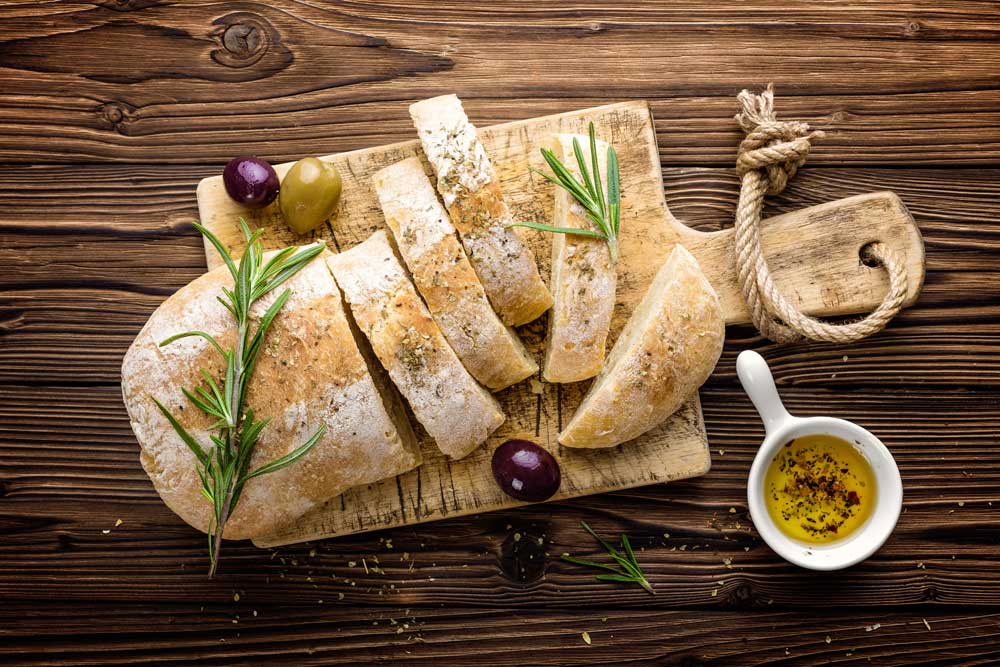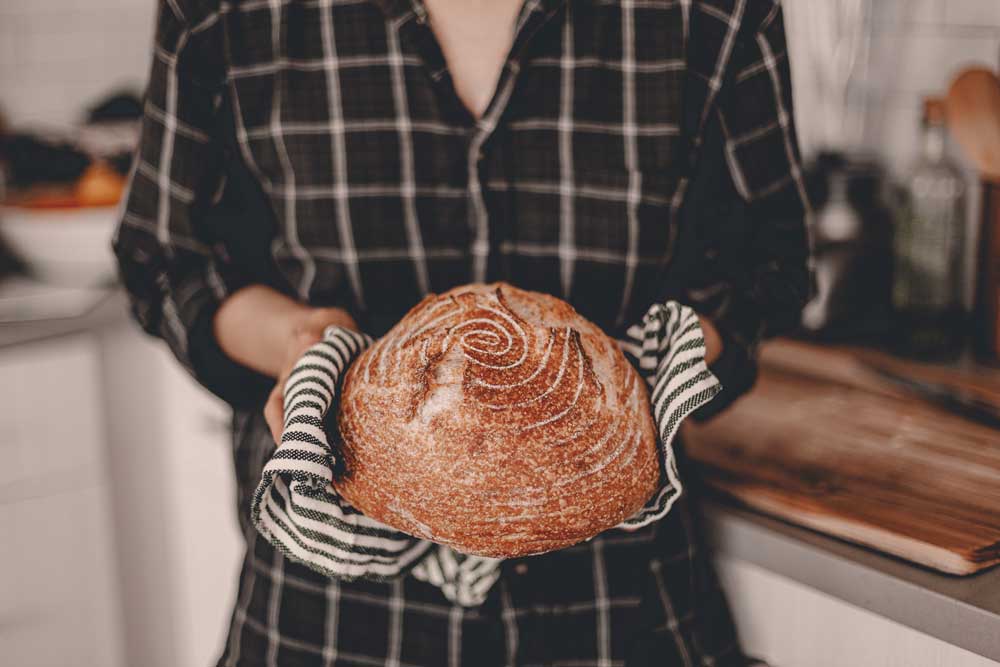There’s nothing quite like the aroma of freshly baked bread wafting through your home. Making bread at home is not only a rewarding experience but also ensures that you know exactly what ingredients go into your loaf. Whether you're a novice baker or an experienced one, this guide will take you through a simple yet delicious homemade bread making recipe that will have you enjoying fresh bread in no time.
Baking bread at home is an ancient practice that connects us to generations of bakers who have relied on basic ingredients to create sustenance and delight. Today, with modern conveniences and techniques, making bread at home is easier than ever. Beyond the basic bread-making recipe, the versatility of homemade bread allows for endless variations and flavours. Imagine the satisfaction of slicing into a warm, golden-brown loaf that you crafted with your own hands, knowing it's free from preservatives and artificial additives.
This guide will walk you through each step, from preparing the yeast to the final bake, ensuring your success even if it’s your first attempt. With detailed instructions and helpful tips, you’ll discover that baking bread at home is not just a culinary task but a joyous and fulfilling experience. Get ready to fill your kitchen with the comforting smell of home-baked bread and enjoy the wholesome taste that comes with it.
Special Facts about This Recipe
● Nutritious and fresh: Unlike store-bought bread, homemade bread doesn't contain preservatives or artificial additives. You have complete control over what goes into your bread, ensuring it is made from wholesome ingredients. This makes it a healthier option for you and your family, providing essential nutrients without unwanted chemicals.
● Customisable: One of the greatest advantages of making bread at home is the ability to experiment with various ingredients to suit your taste. You can add whole grains, nuts, seeds, herbs, dried fruits, or even cheese to create unique flavours and textures. Whether you prefer a hearty multigrain loaf, a savoury rosemary and garlic bread, or a sweet cinnamon raisin bread, the possibilities are endless.
● Economical: Making bread at home is cost-effective, especially when compared to artisanal bakery loaves. With just a few basic ingredients, you can produce multiple loaves for a fraction of the price. This not only saves money but also allows you to make bread whenever you want, without needing to run to the store.
● Therapeutic: The process of kneading dough can be quite relaxing and meditative. It offers a wonderful way to unwind and de-stress. The repetitive motions of kneading, the tactile sensation of working with dough, and the focus required can be almost therapeutic, providing a sense of calm and accomplishment.
● Satisfying: There’s a profound sense of satisfaction that comes with baking your own bread. Watching the dough rise and transform into a beautifully baked loaf gives you a tangible reward for your efforts. The joy of slicing into a warm, freshly baked loaf and tasting the fruits of your labour is unparalleled.

Essential Tips for Any Bread Making Recipe
1. Use fresh ingredients: Always use fresh yeast and high-quality flour. Fresh yeast ensures better fermentation and a good rise, while high-quality flour affects the texture and taste.
2. Temperature matters: Both the temperature of the water used to activate yeast and the room temperature can affect the dough’s rise. Warm water (about 110°F) is ideal.
3. Kneading: Kneading develops the gluten in the dough, which is essential for the bread’s structure. Knead the dough until it’s smooth and elastic.
4. Proofing time: Allow the dough to rise until it has doubled in size. This can take anywhere from 1 to 2 hours, depending on the room temperature.
5. Don’t rush: Good bread takes time. Be patient during each step of the process to ensure the best results.
6. Check doneness: Tap the bottom of the loaf; it should sound hollow when done. An internal temperature of 190-200°F is a good indicator that the bread is fully baked.
7. Cool properly: Let the bread cool completely on a wire rack before slicing. This helps set the crumb structure.
How to Make Homemade Bread
Ingredients
● 4 cups all-purpose flour
● 1 packet (2 ¼ teaspoons) active dry yeast
● 1 ½ teaspoons salt
● 1 tablespoon sugar
● 1 ½ cups warm water (110°F)
● 2 tablespoons olive oil or melted butter
Step-by-Step Guide
Step 1: Prepare the yeast
1. In a small bowl, combine warm water and sugar. Stir until the sugar dissolves.
2. Sprinkle the yeast over the water and let it sit for about 5-10 minutes until it becomes frothy.
Step 2: Make the dough
1. In a large mixing bowl, combine the flour and salt.
2. Make a well in the centre and pour in the yeast mixture and olive oil (or melted butter).
3. Mix until a dough forms. You can use a wooden spoon or your hands for this step.
Step 3: Knead the dough
1. Transfer the dough to a lightly floured surface.
2. Knead the dough for about 10 minutes until it’s smooth and elastic. If the dough is too sticky, add a little more flour, one tablespoon at a time.
Step 4: First rise
1. Place the dough in a greased bowl, turning it to coat all sides with oil.
2. Cover with a clean cloth and let it rise in a warm, draft-free area for about 1-2 hours, or until it has doubled in size.
Step 5: Shape the dough
1. Once the dough has risen, punch it down to release the air.
2. Transfer it to a floured surface and shape it into a loaf.
3. Place the loaf in a greased bread pan, or shape it into a freeform loaf and place it on a baking sheet.
Step 6: Second rise
1. Cover the dough again and let it rise for about 30-60 minutes, or until it has doubled in size.
Step 7: Preheat the oven
1. Preheat your oven to 375°F (190°C).
Step 8: Bake the bread
1. Once the dough has risen, place it in the preheated oven.
2. Bake for 25-30 minutes, or until the bread is golden brown and sounds hollow when tapped on the bottom.
Step 9: Cool the bread
1. Remove the bread from the oven and let it cool in the pan for 10 minutes.
2. Transfer to a wire rack to cool completely before slicing.

Serving and Other Suggestions
Fresh homemade bread can be served in numerous ways:
● As a side: Perfect with soups, salads, or pasta dishes.
● Sandwiches: Use slices for delicious homemade sandwiches.
● Toast: Toast it with butter, jam, or avocado for a quick breakfast or snack.
● Bruschetta: Top with tomatoes, basil, and olive oil for a classic Italian appetiser.
Storage Suggestions
● Room temperature: Store the bread in a paper bag or bread box at room temperature for up to three days.
● Freezing: Wrap the loaf in plastic wrap and then aluminium foil before freezing. It can be stored for up to three months. Thaw at room temperature before serving.
Conclusion
Baking bread at home is a delightful and fulfilling activity that brings together the perfect blend of science and artistry. It allows you to enjoy fresh, homemade bread that is both nutritious and customisable, tailored exactly to your taste preferences and dietary needs. The process of making bread from scratch, from mixing the dough to watching it rise and finally baking it to a golden perfection, is immensely satisfying.
With the right ingredients and a bit of patience, you can create a loaf that rivals those from your favourite bakery. Each step in the bread-making process offers its own rewards: the tactile pleasure of kneading dough, the anticipation as it rises, and the mouthwatering aroma that fills your home as it bakes. These sensory experiences make the effort worthwhile, transforming simple ingredients into a delicious and wholesome final product.
Whether you're aiming for a rustic artisan loaf, a soft sandwich bread, or experimenting with different flavours and add-ins, homemade bread offers endless possibilities. Moreover, it provides a sense of accomplishment and a connection to a timeless tradition. Follow these steps, embrace the process, and soon you'll be enjoying the wonderful aroma and taste of homemade bread, sharing it with family and friends, and perhaps even starting your own cherished baking traditions.
FAQs
What type of flour is best for bread making?
Bread flour is ideal as it has a higher protein content, which helps develop more gluten, resulting in a chewier texture. However, all-purpose flour works well for most home bread making recipes.
Can I use instant yeast instead of active dry yeast?
Yes, you can use instant yeast. It doesn't require activation in water. You can add it directly to the dry ingredients.
How do I know when my bread is done baking?
Tap the bottom of the loaf - it should sound hollow. An internal temperature of 190-200°F is a good indicator of doneness.
Why didn’t my dough rise?
This could be due to inactive yeast, water that was too hot or too cold, or a drafty environment. Ensure your yeast is fresh and the water is at the right temperature.
How can I make my bread more flavourful?
Adding ingredients like herbs, garlic, cheese, or nuts can enhance the flavour. Allowing the dough to rise slowly in the refrigerator overnight can also develop a richer taste.